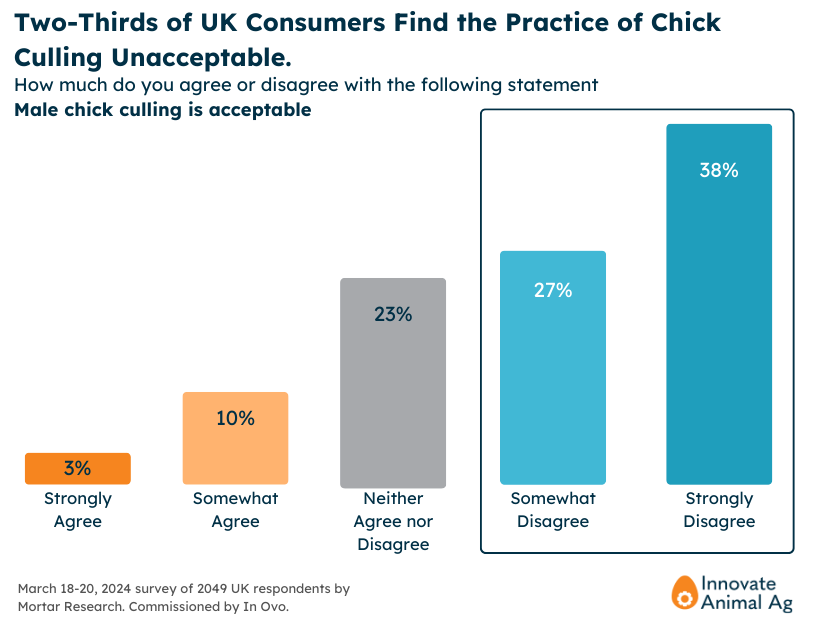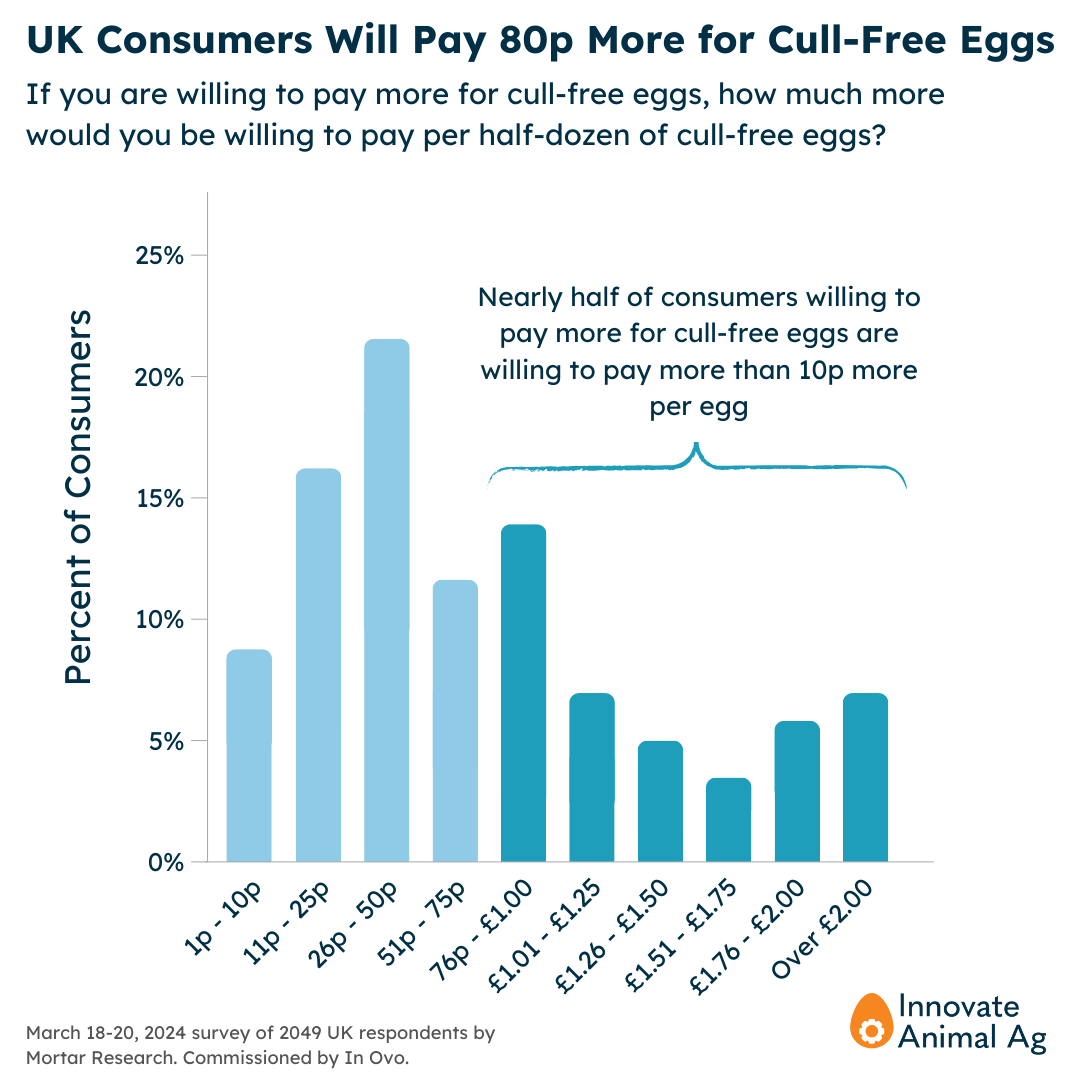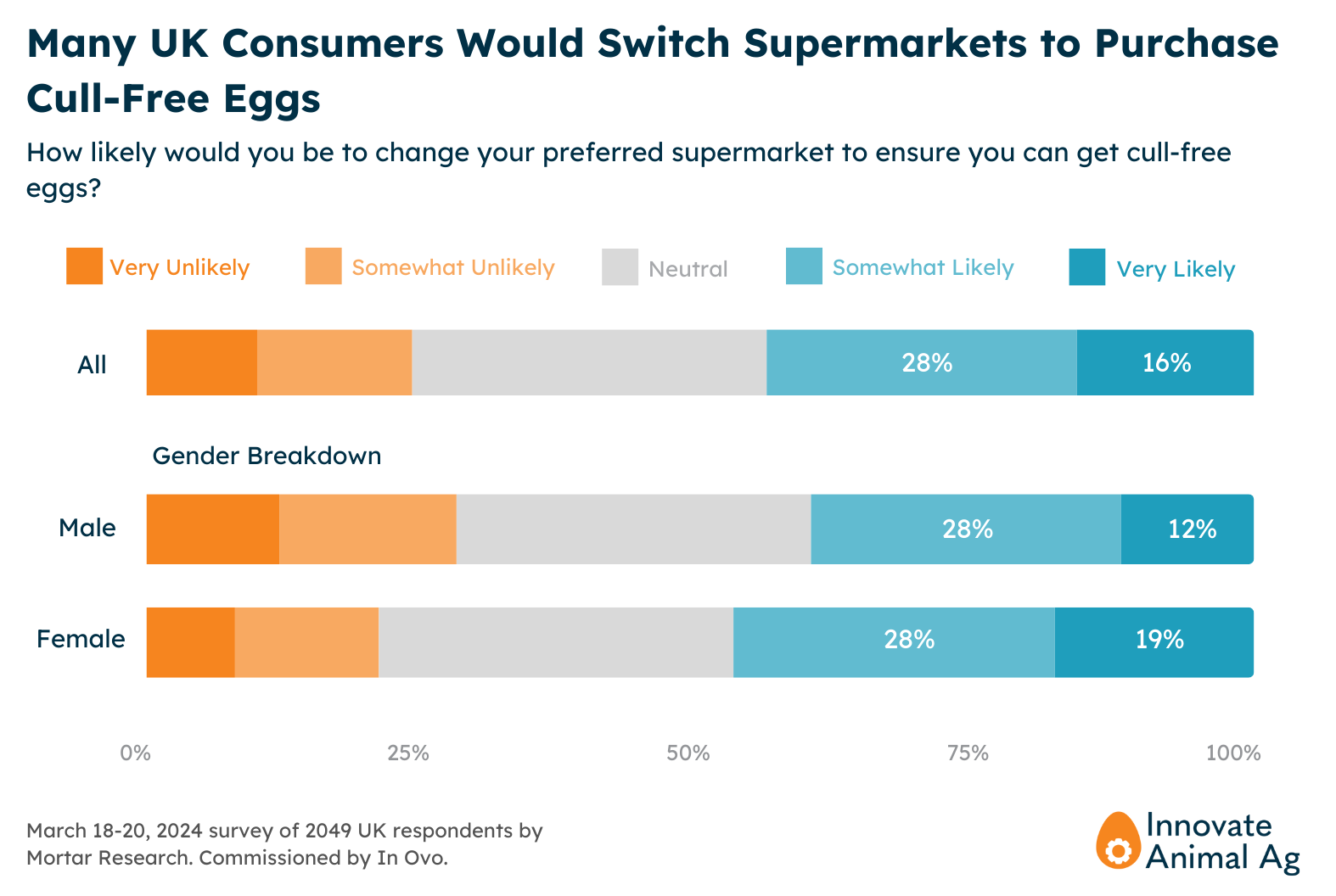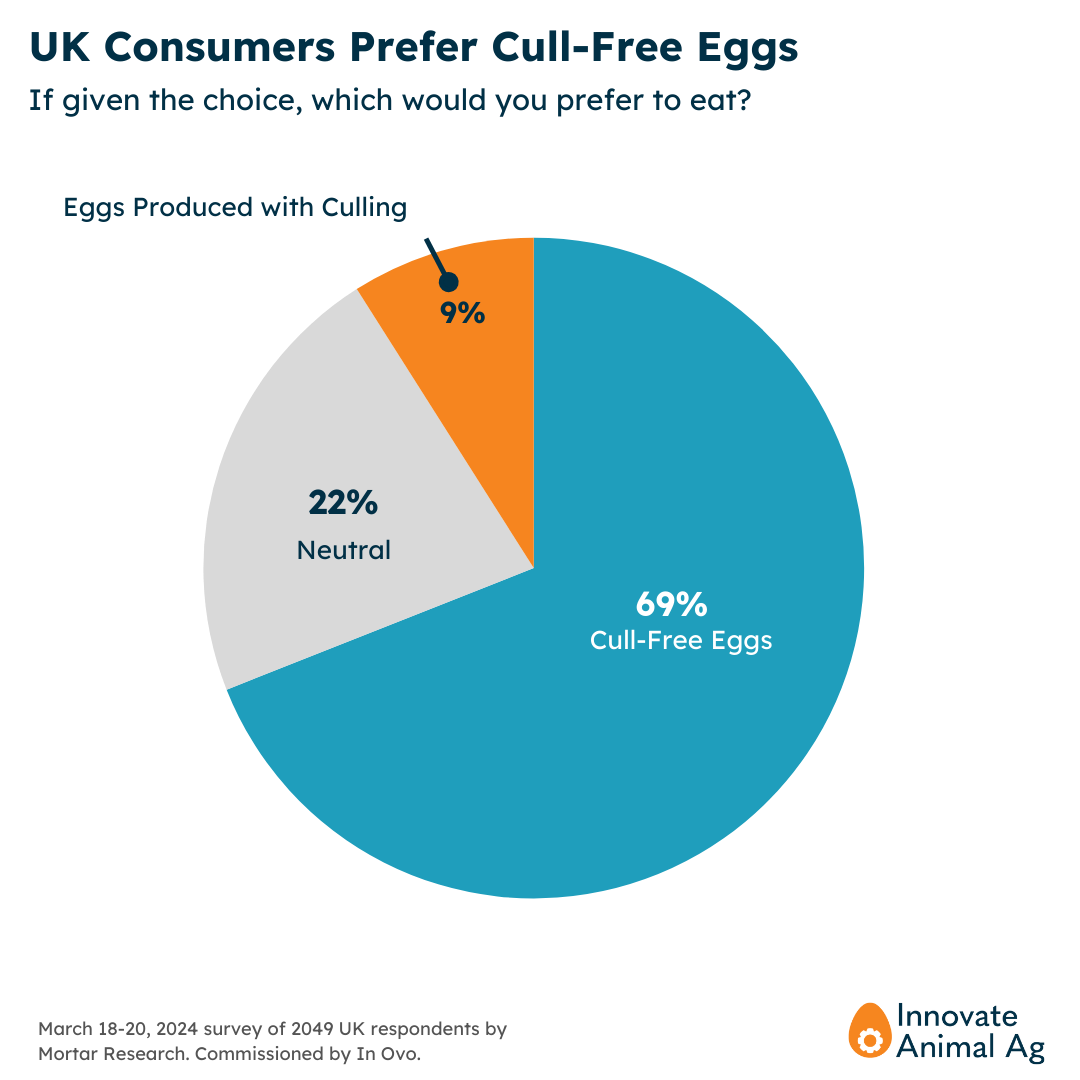Survey of UK Consumers Demonstrates Business Opportunity for Cull-Free Eggs
In-ovo sexing technology company In Ovo recently commissioned a survey of UK citizens to learn more about how consumers across the British Isles feel about the challenge of chick culling, and the solution that is being rapidly adopted across Europe, in-ovo sexing.


Similar to what Innovate Animal Ag found in our own survey of American consumers, this UK survey lays out a clear business proposition for retailers and egg producers to cater to welfare-conscious consumers. These customers are not only willing to pay significantly more for cull-free eggs, but even express significant willingness to switch supermarkets to ensure they can purchase these more ethical eggs.
The survey was run between March 18th and 20th, 2024, by Mortar Research. The study targeted a nationally representative sample of 2,055 UK citizens. Among the UK consumers surveyed, 23% expressed familiarity with male chick culling in egg production, a lower familiarity of culling than is found in continental Europe.
The survey further found that when consumers are informed about the practice, around two-thirds of consumers (65%) expressed that chick culling is unacceptable, and only a small fraction of consumers thought that it was acceptable. 63% of consumers also admitted that they were surprised that culling is permitted in the UK, and the same percentage of consumers reported that they wanted legislation to ban the practice.
The Business Opportunity
In general, the survey found a strong preference for cull-free eggs among UK consumers. Specifically, 69% of consumers would prefer cull-free eggs over those produced with current practices.
Most consumers are also willing to put their money where their mouth is, with more than half (54%) of respondents saying that they would be willing to pay more for cull-free eggs. Of the consumers willing to pay more, the average willingness to pay is a notable 80p (around $1.00) more per half-dozen eggs, or over 13p (around $0.16) more per egg.



This willingness to pay data is particularly notable given the recent report conducted by the UK Government’s official Animal Welfare Committee. The Committee, in the course of coming to its recommendation of in-ovo sexing, undertook a detailed examination of the production costs of current technology. The committee found that the cost of in-ovo sexing, “spread across approximately 350 table eggs, laid over a bird’s lifespan [...] equates to a little under a penny extra per table egg.” This means that among the consumers willing to pay for cull-free eggs, the consumer is willing to pay, on average, 13 times the production cost of in-ovo sexing. The massive difference between the production cost and the selling price will allow each producer in the supply chain to substantially increase their margin, underscoring the significant business opportunity for cull-free eggs.
Another fascinating finding of the survey concerns a unique opportunity for retailers looking to win upmarket consumers from competitors. A remarkable 44% of consumers expressed that they would switch supermarkets to ensure that they were able to purchase cull-free eggs. Among female consumers, two-thirds of whom do most of the grocery shopping for their household in the UK, 48% would be likely to switch supermarkets, including 19% who would be very likely to do so.
Check out our Overview page for more information on in-ovo sexing. This page will be kept up to date with new developments as soon they occur.
